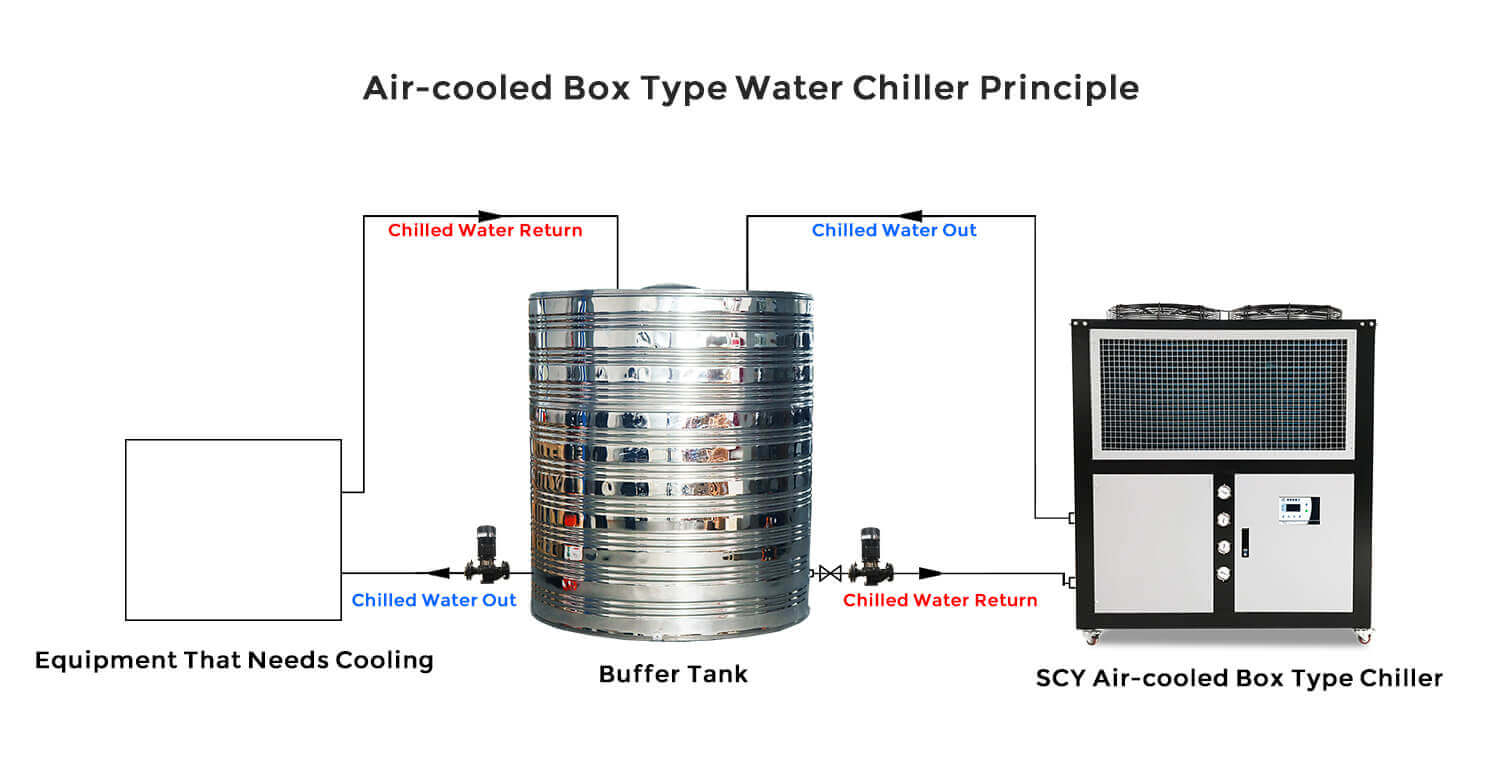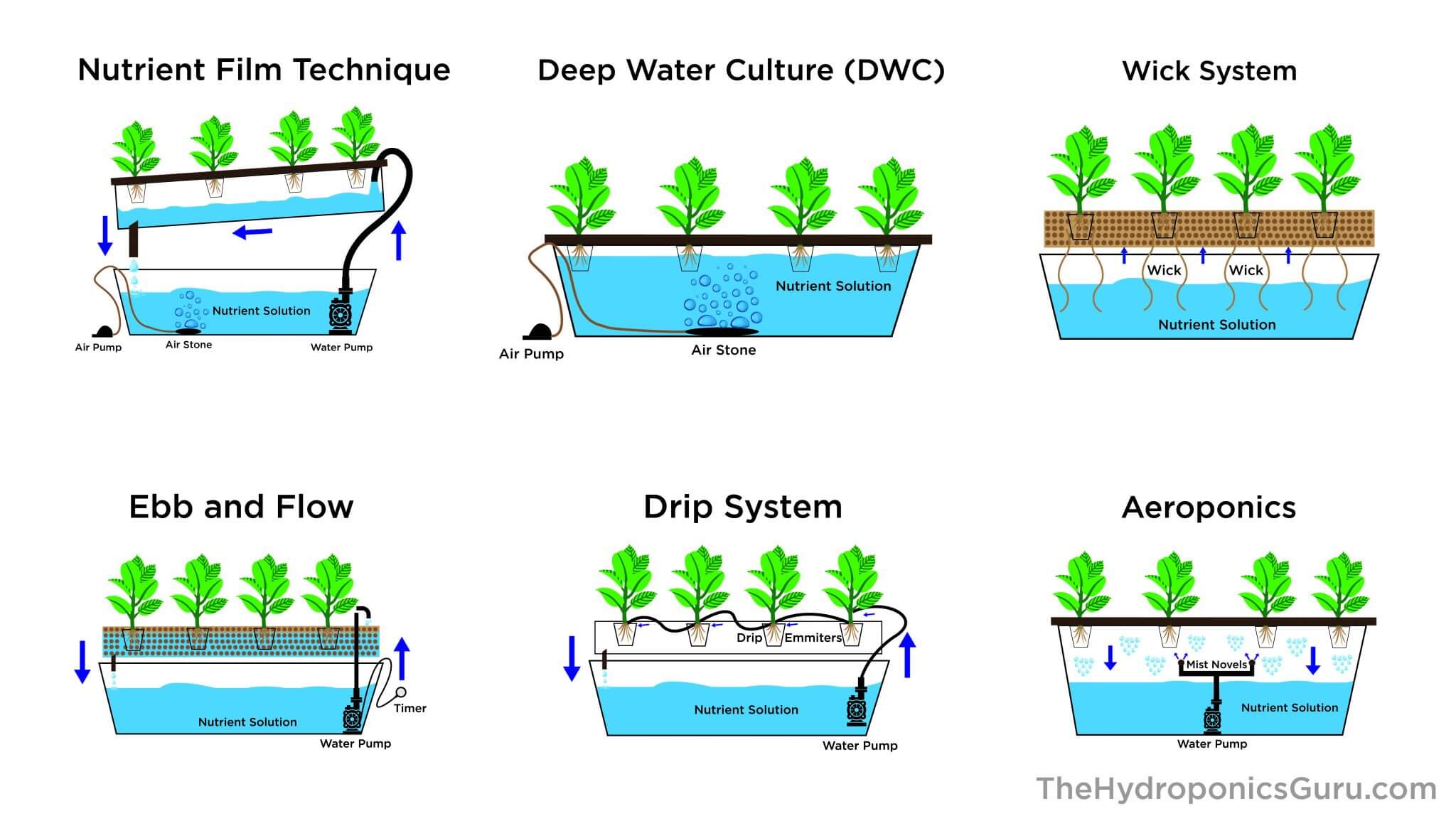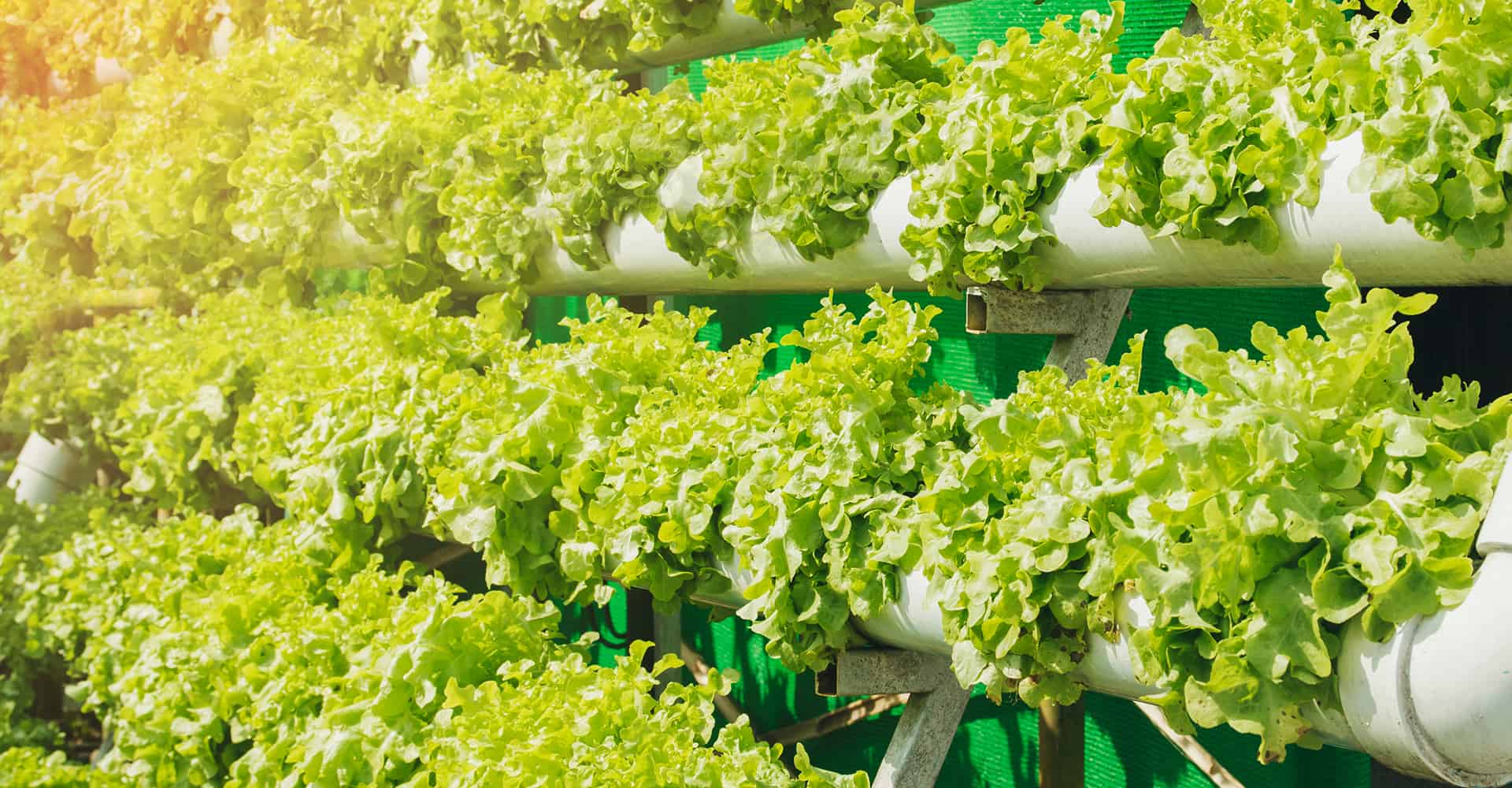Hydroponic systems rely on water as the medium for delivering nutrients directly to plant roots, offering advantages like faster growth and resource efficiency. However, water temperature significantly affects plant physiology. The ideal range is typically 65°F (18°C) to 75°F (24°C), with 68°F (20°C) often cited as optimal for many crops. Deviations can lead to reduced dissolved oxygen, nutrient uptake issues, and pathogen growth, all of which compromise yields. Hydroponic chillers address these challenges by maintaining precise water temperatures, making them indispensable for both hobbyists and commercial growers.
Why Hydroponic Chillers Are Needed

تؤثر درجة حرارة الماء في أنظمة الزراعة المائية بشكل مباشر على صحة النبات ونموه. تشير الأبحاث إلى أن درجات الحرارة الأعلى من 75 درجة فهرنهايت يمكن أن تقلل مستويات الأكسجين المذاب، مع انخفاض بمقدار 3 ملجم / لتر لكل ارتفاع 18 درجة فهرنهايت (10 درجات مئوية)، كما هو مذكور في موارد الزراعة المائية. يؤدي هذا الانخفاض إلى الضغط على الجذور، مما يعيق امتصاص العناصر الغذائية ويحتمل أن يوقف النمو. كما أن الماء الدافئ يعزز البكتيريا الضارة والفطريات والطحالب، مما يزيد من مخاطر الإصابة بأمراض مثل تعفن الجذور. على سبيل المثال، في البيئات الدافئة، مثل البيوت الزجاجية تحت أضواء النمو المكثفة، يمكن أن تتجاوز درجة حرارة الماء بسهولة 80 درجة فهرنهايت، مما يعرضك لخطر فقدان المحاصيل. تعتبر المبردات ضرورية لمنع هذه المشكلات، خاصة في إعدادات الدفيئة الداخلية أو على مدار العام حيث تكون درجات الحرارة المحيطة مرتفعة.
How Hydroponic Chillers Work
تعمل المبردات المائية على مبادئ مشابهة للمبردات الصناعية ولكنها مصممة خصيصًا لتطبيقات الزراعة المائية. تتضمن العملية:
- الدورة الدموية: يتصل المبرد بخزان الزراعة المائية عبر الأنابيب، مع مضخة تقوم بتدوير المحلول المغذي عبر الوحدة.
- تبريد: داخل المبرد، يمر المحلول عبر ملف المبخر حيث يمتص المبرد الحرارة. ينتقل المبرد الساخن بعد ذلك إلى المكثف، مما يؤدي إلى إطلاق الحرارة خارج الوحدة.
- التحكم في درجة الحرارة: يقوم منظم الحرارة أو وحدة التحكم الرقمية بمراقبة درجة حرارة الماء وضبط تشغيل المبرد للحفاظ على نقطة الضبط، وغالبًا ما يحقق الدقة في حدود ±0.5 درجة مئوية إلى ±1 درجة فهرنهايت للنماذج المتطورة.

ويضمن نظام الحلقة المغلقة أن تكون المياه العائدة إلى الخزان عند درجة الحرارة المطلوبة، مما يدعم نمو النبات بشكل ثابت.
Benefits of Using Hydroponic Chillers

يوفر تنفيذ المبرد المائي العديد من المزايا، مدعومة بالملاحظات العملية من المزارعين:
- تعزيز صحة النبات: الحفاظ على درجات الحرارة المثالية، عادة من 65 درجة فهرنهايت إلى 75 درجة فهرنهايت، يضمن امتصاص العناصر الغذائية بكفاءة ويقلل من إجهاد الجذور، مما يؤدي إلى نباتات أكثر صحة ونمو قوي.
- الوقاية من الأمراض: تمنع درجات حرارة الماء البارد نمو مسببات الأمراض، مما يقلل من مخاطر الإصابة بأمراض مثل البيثيوم (تعفن الجذور)، التي تزدهر في الظروف الأكثر دفئًا. وهذا مهم بشكل خاص في منع العفن والعفن في منطقة الجذر.
- زيادة الغلة: تعمل الظروف المتسقة على تعزيز معدلات نمو أسرع ومنتجات ذات جودة أعلى، حيث تشير بعض الأنظمة إلى زيادة في الإنتاجية تصل إلى 3 أضعاف، كما هو موضح في أوصاف المنتج من موردي الزراعة المائية.
- كفاءة الطاقة: تستخدم المبردات الحديثة مواد تبريد صديقة للبيئة مثل R134a وتتميز بضواغط متغيرة السرعة، مما يقلل من استهلاك الطاقة وتكاليف التشغيل.
- الأتمتة والراحة: تشتمل العديد من المبردات على شاشات عرض رقمية وقدرات مراقبة عن بعد، مما يسمح للمزارعين بضبط درجات الحرارة وضبطها دون تدخل يدوي مستمر، مما يعزز إدارة النظام.
Types of Hydroponic Chillers

تختلف المبردات المائية من حيث الحجم والقدرة على تلبية احتياجات الإعدادات المختلفة:
- المبردات المدمجة: Designed for small to medium-sized hydroponic systems, such as home gardens or small commercial operations. These typically range from 1/10 HP to 1/2 HP, cooling reservoirs up to 250 gallons. They are compact, often fitting under workbenches, and feature user-friendly controls. Examples include the Active Aqua chiller, which uses R134a refrigerant and offers corrosion-resistant titanium heat exchangers.
- المبردات الصناعية: Tailored for large-scale operations, these can handle reservoirs of several thousand gallons, with capacities from 1 HP to 10 HP or more. They are built for durability, often with stainless steel components, and include advanced features like dual cooling circuits for separate reservoir and equipment cooling. These are ideal for commercial greenhouses or large indoor farms.
Key features to consider include temperature control precision (e.g., ±0.5°F for sensitive crops), energy efficiency (variable-speed compressors), and durability (corrosion-resistant materials for long-term use with nutrient solutions). Many models also offer LCD displays, overcurrent protection, and quiet operation for noise-sensitive environments.
اختيار المبرد المناسب
Choosing the appropriate chiller involves several factors to ensure it meets your system’s needs:
- Reservoir Size: Calculate the volume of your reservoir in gallons, as this determines the cooling load. For example, a 100-gallon reservoir is common for medium-sized setups.
- Desired Temperature Drop: Determine how much you need to lower the water temperature. For instance, if current water is 80°F and you want 68°F, the differential is 12°F.
- Cooling Capacity Calculation: Use the formula:
وحدة حرارية بريطانية / ساعة=Gallons×8.33×Temperature Differential (°F)
Add a 20-25% safety margin to account for inefficiencies. For the example above:
وحدة حرارية بريطانية / ساعة=100×8.33×12=9996 وحدة حرارية بريطانية / ساعة
With a 25% margin:
9996×1.25=12495 وحدة حرارية بريطانية / ساعة
- Ambient Conditions: Consider the room temperature where the chiller will be located. Chillers perform better in cooler ambient air (e.g., 70°F vs. 90°F), so locate them outside the grow tent if possible to improve efficiency.
- Flow Rate and Pump Compatibility: Ensure the chiller’s flow rate matches your system’s pump capacity. Some units require an external pump (inline or sump), so match throughput to chiller needs, typically rated in gallons per hour (GPH).
- Additional Features: Look for models with digital controls, alarm systems for low water levels or high temperatures, and eco-friendly refrigerants like R134a for sustainability.
Product recommendations include the JBJ Aquarium Arctica Titanium Chiller for high-end reliability, with capacities from 1/15 HP for 40 gallons to 1 HP for 700 gallons, and the Active Aqua Chiller for value, offering 1/10 HP for 13–40 gallons up to 1 HP for 80–250 gallons. Both come with warranties (2 years for JBJ, 1 year for Active Aqua) and are suitable for various setups.
التركيب والصيانة
Installing a hydroponic chiller involves connecting it to the reservoir with appropriate tubing and ensuring adequate ventilation to prevent heat buildup. Most manufacturers, such as Hydrobuilder, provide installation guides, such as how to install a water chiller to your hydroponic system. Key steps include:
- ضع المبرد بالقرب من الخزان لتقليل طول الأنابيب، مما يقلل من انخفاض الضغط.
- تأكد من وجود مسافة 12-18 بوصة لتدفق الهواء حول الوحدة.
- قم بتوصيله بمضخة متوافقة، مما يضمن أن معدل التدفق يتوافق مع مواصفات المبرد.
الصيانة ضرورية لطول العمر والكفاءة:
- تنظيف: قم بتنظيف ملفات ومرشحات المبرد بانتظام، عادة كل 3-6 أشهر، لمنع تراكم الغبار والحفاظ على كفاءة التبريد.
- مستويات سائل التبريد: تحقق من مستويات سائل التبريد المناسبة وحافظ عليها إن أمكن، باستخدام الماء منزوع الأيونات لمنع تكون القشور.
- عمليات التفتيش: قم بفحص الخراطيم والتوصيلات والمضخات بشكل دوري بحثًا عن أي تسرب أو تآكل، ويفضل أن يكون ذلك كل ثلاثة أشهر.
- خدمة احترافية: Schedule annual maintenance by a qualified technician to ensure optimal performance, checking for refrigerant levels and system integrity.
استنتاج
Hydroponic chillers are indispensable for maintaining optimal water temperatures in soilless cultivation, ensuring plant health, preventing diseases, and maximizing yields. Whether you’re a hobbyist with a small reservoir or a commercial grower with large-scale operations, selecting the right chiller—based on size, capacity, and features—can significantly enhance your system’s performance. By following the sizing calculations and maintenance tips provided, you can achieve consistent, high-quality results, making hydroponic chillers a worthwhile investment for any hydroponic endeavor.
